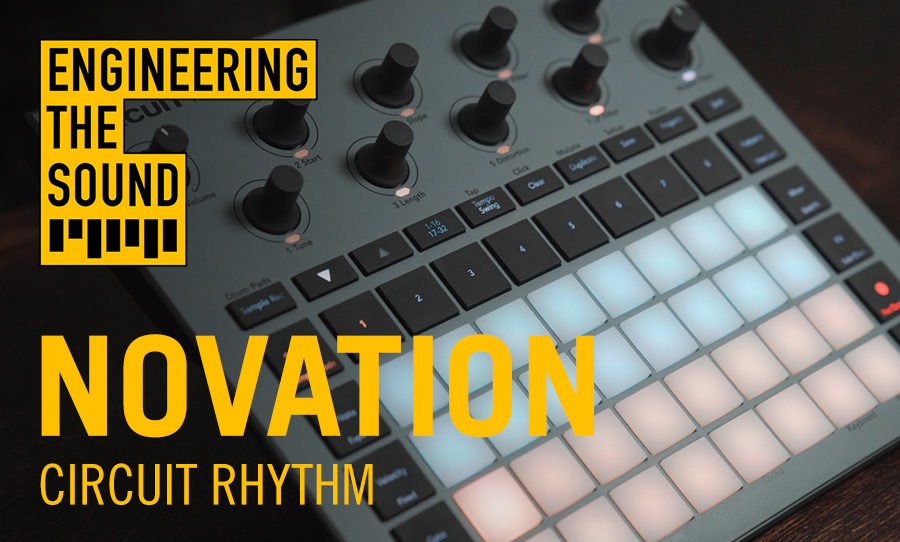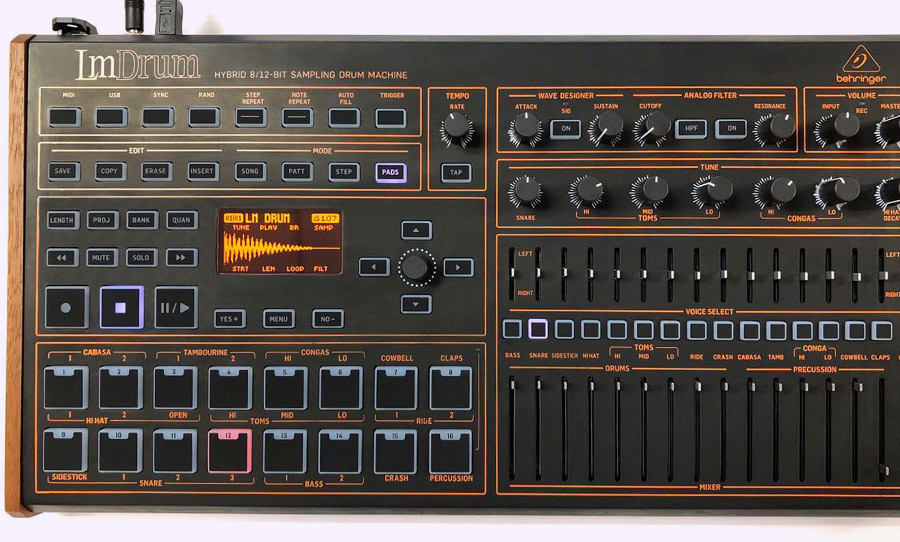We went sifting through the dark corners of the web to extract the myths, secrets and stories about why the holy Roland TR-808 sounds the way it does.
Yes, welcome to another article praising the almighty, space age drum machine of all drum machines: the Roland TR-808. We are well aware of the multitude of articles discussing the legacy of this seminal instrument. And to be completely honest with you, we are all for those articles; they’re not even enough. No number of words on the 808’s legacy would even come close to writing the praise the device is worthy of.
However, at the risk of plagiarising and getting sued, let’s steer clear of the dead horse the Internet is littered with. A less explored question on the World Wide Web is, “How the fuck does the TR-808 make those sounds?” (or, if you are more cosmically inclined, believing the nascent theory that Afrika Bambaataa is an alien life-form sent to colonise Earth armed with an 808, then a better question wold be, “Which galaxy did this technology come from?”).

Before getting technical, let’s get sentimental with a trip down memory lane. The TR-808 was released in 1980 by the Roland Corporation, who was at the forefront of the Japanese electronics boom in the 1970s and 1980s (that would explain why all the vintage Roland gear you are watching on eBay is steadily climbing well out of your price range).
However, despite the abundant adoration across the Internet for the robotic sounds of the TR-808, the drum machine was initially a commercial flop. To consumers, the 808’s main competitor, the Linn LM-1, sounded ‘more like a drum set’ due to its use digital samples – the first of its kind.
Thus, the same reason the 808 is so revered today was the crux of its initial downfall: the analogue circuitry meant each drum sound was created uniquely each and every time. The TR-808 sounds nothing like drums; it sounds like an 808.
After three years of production and 12,000 units, Roland discontinued the product, and to this day is yet to make another one (though they have certainly cashed in on nostalgia with a cute imitation).
Despite its commercial failings, no one could have predicted the impact the TR-808 would have on music, especially hip-hop and electronic music. In 1982, Afrika Bambaataa and the Soul Sonic Force piped the machine onto the general populous’ wavelength with Planet Rock, a legendary sample-heavy party jam (before party jams existed), backed by none other than the TR-808.
From that point on, the 808 transcended genres, defining not only 1980s New York hip-hop, but pop classics such as Marvin Gaye’s career pivot point Sexual Healing (1982) or laid the foundation for music scenes transforming into genres all their own, such as Detroit techno, Miami drum and bass, and Atlanta trap.
So how on earth did these sounds come to be? To answer this question, we dove to some of the darkest (read ‘nerdiest’) depths of the Internet. I’m not talking about some obsessive Redditor who spends most waking moments on r/Minecraft, but rather people who are building synths in their parents’ basements in their free-time and the driverless cars and iPhone 11s of tomorrow during their cushy 9-to-5 tech job (who could very well also be the Minecraft Redditors).
Analog Affordability
The 808 is a powerful machine, able to store up to 32 patterns with the capability of stringing together over 750 measures. It is fully programmable too, which was nothing short of otherworldly in 1980.
It came stocked with 16 sounds, each with their own channel volume knob, the congas and toms with tuning options, the bass drum, snare, and cymbal with variable tones, the option to alter the decay of the bass drum, cymbal, and open hi-hat, and a knob labeled “snappy” on the snare channel (whatever that means).
As 47 years of music-making can attest to, a lot can be done with an 808.
Nowadays, ‘analog’ has become synonymous with ‘expensive’. In 1980, however, it was quite the opposite. Linn’s LM-1, a digital sample-enabled rhythm machine cost around $5000. Alternatively, the TR-808 was a bargain at $1200. Why? Its analog circuitry. The memory space required for samples used on the Linn was far more expensive than creating a new sound each time one was triggered.
The Mythical Origins of the “808 Sound”
What is a legendary piece of musical hardware without its share of mythological origin stories?
As legend recalls, when developing the circuitry of the 808 Roland founder, Ikutaro Kakehashi, intentionally bought faulty transistors, hereby giving the machine its signature sizzling sound. Kakehashi claimed that these transistors were one of the key reasons for halting production of the TR-808: the faulty transistors could not be reproduced nor ordered again, and regular, fully operational ones would just not provide the same ‘sizzle’.
While a dubious story for anyone with an electrical engineering degree (a faulty transistor just should not work, plain and simple, right?), the acronym ‘TR’ does stand for ‘Transistor Rhythm,’ potentially corroborating the story.
Another myth of great proportions speaks to the creation of the cymbal sound, specifically. Don Lewis, an American engineer and musician was brought over from the Hammond Organ Company by Kakehashi to help develop the TR-808. Lewis claims that Roland engineer Tadao Kikumoto once spilled tea on a prototype circuit. When turned on, the sound produced was a ‘pssh’ sound. That sound then inspired the ‘cymbal’ channel on the 808, and engineers spent months trying to recreate it. “There was nothing else like it,” Lewis said. “Nobody could touch it.”
Again, this is a suspicious story considering that a drop of rain can ruin an iPhone and supposedly this circuit, complete with exposed components, survived a cup of tea. Though, seeing as the sound of the TR-808 has never actually been replicated, these myths have rightfully made their way into this article.
Secrets Hiding Under the Beast
The most definitive key to the machine’s sound generation is its Bridged T-Network circuit technology, which was nothing short of innovative at the time. Other analog drum machines create sound through an oscillator continuously producing an output signal. The signal becomes audible through a voltage controlled amplifier (VCA) that is in turn controlled by a trigger (for example, a finger tapping a pad assigned to the snare). This same VCA controls the signal’s decay.
However, the TR-808’s Bridged T-Network functions rather differently. A trigger (again, say a finger on the snare-assigned pad) actually kicks the oscillator into action, producing a signal that will decay to silence naturally. The signals from this circuit are punchy and accentuated, resulting in a beat that is more than capable of blowing one’s speakers.
From house and hip-hop, to pop and post-punk, we’ve unquestionably all gotten down to an 808 at point or another. That’s how pervasive the machine is, and will continue to be. No genre or sonic predilection is out of reach of the 808’s booming beats.
Regardless which origin story one chooses to believe (faulty transistors or extra-terrestrial invention), the TR-808 will forever remain a rhythm machine housing the beats of the future.


